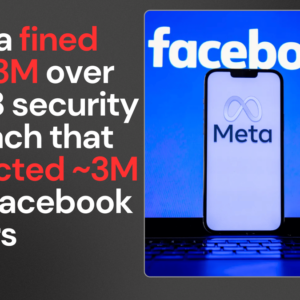Thinking of Starting an IT Startup? Here’s What You Need to Know First
Did you know that while the IT sector has birthed some of the world’s most successful companies, nearly 90% of tech startups fail within their first few years? If you’re dreaming of launching your own IT startup in 2025, you’re entering one of the most dynamic—yet challenging—business landscapes imaginable. But don’t worry! With proper planning and knowledge, you can position yourself among the successful 10%.
The technology world continues to evolve at breakneck speed. Since early 2024, we’ve witnessed unprecedented advancements in artificial intelligence, blockchain applications, and remote work technologies. Now is an exciting time to enter the market with fresh ideas and innovative solutions. Let’s explore what you need to know before taking the plunge.
Essential Steps to Start an IT Startup
Starting an IT startup isn’t just about having a great technology idea—it’s about building a sustainable business. Here’s your roadmap to getting started:
1. Identify and Define Your Niche
The most successful IT startups solve specific problems. Rather than creating a “one-size-fits-all” solution, focus on addressing a particular pain point in the market. As of early 2025, we’re seeing tremendous opportunities in areas like healthcare tech, sustainable technology solutions, and specialized AI applications. Remember, the narrower your focus initially, the better chance you have at becoming the go-to expert in that space.
2. Develop a Solid Business Plan
Even the most innovative technology needs a sound business model behind it. Your business plan should include market analysis, competitor research, revenue projections, and go-to-market strategies. Pay special attention to your monetization strategy—will you use subscription models, one-time purchases, freemium structures, or something else? The SaaS (Software as a Service) model continues to dominate in 2025, but alternative approaches might better suit your specific product.
3. Build Your Minimum Viable Product (MVP)
Don’t wait for perfection. Build a functional version of your product with just enough features to satisfy early customers and provide feedback for future development. This allows you to test your concept without overinvesting in unproven ideas. Modern development methodologies like Agile and DevOps are essential for today’s startups, enabling rapid iteration based on real user feedback.
4. Assemble the Right Team
Your team is perhaps your most valuable asset. For technical founders, finding business-savvy partners is crucial. For business founders, securing technical talent is equally important. The remote work revolution that accelerated in recent years has created unprecedented access to global talent. Look for team members who not only have the right skills but also share your vision and can thrive in the unpredictable startup environment.

How to Validate Your IT Startup Idea
Before investing significant time and resources, you need to validate whether your idea has market potential. Here’s how:
1. Conduct Market Research
Start by understanding your target market size, growth projections, and existing competitors. Use tools like industry reports, surveys, and competitor analysis to gauge market needs. Look at trends that have emerged since 2024—what problems are becoming more pressing? What solutions are gaining traction? What gaps exist in the current marketplace that your startup could fill?
2. Talk to Potential Customers
Direct feedback is invaluable. Conduct interviews with potential users to understand their pain points and how they currently solve the problems your product aims to address. Ask open-ended questions and be prepared to hear feedback that might challenge your assumptions. Customer development interviews often reveal insights that no amount of market research can uncover.
3. Create and Test a Prototype
Build a simple prototype or even just mockups to get concrete feedback. This doesn’t need to be fully functional—even wireframes or a landing page describing your concept can help validate interest. Set specific metrics for what constitutes validation. For example, a certain percentage of positive feedback or a minimum number of pre-signups might indicate you’re on the right track.

Funding Options for IT Startups
Securing capital is often a critical step for IT startups. Here are your main options in 2025:
1. Bootstrapping
Self-funding remains the most common way IT startups begin. It gives you complete control and forces disciplined spending. Many successful tech companies started this way—focusing on generating revenue early rather than chasing investment. Modern cloud infrastructure pricing models have made bootstrapping more viable than ever, with costs that scale gradually as your business grows.
2. Angel Investors and Venture Capital
For startups with high-growth potential, outside investment might be necessary. Angel investors typically invest at earlier stages ($25,000-$100,000), while VCs generally come in at later stages with larger investments. The funding landscape has evolved significantly since 2024, with increased focus on sustainable business models over pure growth metrics. Be prepared to demonstrate measurable traction before approaching serious investors.
3. Accelerators and Incubators
These programs provide mentorship, resources, and often some funding in exchange for equity. Top programs like Y Combinator and Techstars remain highly competitive, but numerous specialized accelerators have emerged focusing on specific technologies or industries. The experience and connections gained can dramatically accelerate your growth.
4. Government Grants and Alternative Funding
Don’t overlook grants, especially if your technology addresses important social or environmental issues. Additionally, crowdfunding, revenue-based financing, and venture debt have become increasingly viable alternatives to traditional equity funding. The diversification of funding options has been a notable trend since 2024, giving founders more choices than ever before.

Common Challenges IT Startups Face
Being aware of potential obstacles will help you navigate them more effectively:
1. Technical Challenges
Technology evolves rapidly, and keeping up can be overwhelming. Selecting the right tech stack, ensuring scalability, maintaining security, and managing technical debt are ongoing challenges. Building with flexibility in mind is crucial—the technologies dominating in 2025 might be different from what’s standard by 2027. Choose solutions that allow for adaptation rather than locking you into specific platforms or frameworks.
2. Market Challenges
Finding product-market fit remains the number one reason startups fail. The market may not be ready for your solution, or competitors might be better positioned to solve the problem. Customer acquisition costs have increased across most sectors since 2024, making efficient marketing strategies more important than ever. Be prepared to pivot based on market feedback—the most successful startups often end up solving different problems than they initially set out to address.
3. Team and Organizational Challenges
Building the right culture, managing growth, and making critical hires while conserving resources require constant attention. Remote and hybrid work arrangements, while offering advantages, add complexity to team building. Establishing clear communication processes and company values early on will help navigate these challenges as you scale.
4. Financial Sustainability
Managing cash flow and extending your runway are perpetual concerns. Many promising startups run out of money before achieving sustainable growth. Be conservative in your projections and have contingency plans for slower-than-expected progress. Monitor your burn rate carefully and establish clear financial metrics that serve as warning signs when adjustments are needed.
Final Thoughts
Starting an IT startup in 2025 offers incredible opportunities, but success requires much more than just technical knowledge. It demands market insight, business acumen, adaptability, and resilience. The most successful founders are those who continuously learn and aren’t afraid to adjust their approach based on new information.












